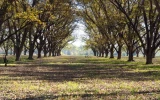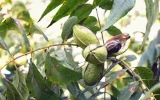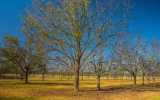How Long Do Pecan Trees Live? (Complete Life Cycle)
Pecan trees are renowned for their longevity, with the potential to thrive for centuries under favorable conditions. Their life cycle encompasses various stages, from germination to maturity and ultimately to decline. In this article, we will explore the complete life cycle of pecan trees and answer the question of how long they live.
Pecan trees typically have a lifespan of anywhere from 75 years up to 250+ years, with some living up to 300 years or more. They grow from seeds, which eventually become saplings that will reach maturity. They will undergo pollination to reproduce and finally reach senescence or aging.
To ensure the longevity of your pecan tree, you need to provide it with optimal growing conditions. Let's find out which factors you need to consider to help your pecan trees live a long and healthy life.
Summary
- The deep taproot system of pecan trees allows them to tap into deep water reservoirs and access essential nutrients that contribute to their overall health and vitality, supporting their long-term growth and longevity.
- Essential practices, such as pruning, irrigation, pest management, and selecting suitable planting sites, are instrumental in supporting the overall vigor and well-being of pecan trees, ultimately contributing to their sustained growth and longevity.
- The life cycle of pecan trees progresses through distinct stages, starting with germination and seedling growth, then entering the juvenile phase, followed by the reproductive phase, and finally reaching senescence after several decades.
- The senescence stage marks the final phase in the life cycle of pecan trees, during which their growth slows and their productivity declines.
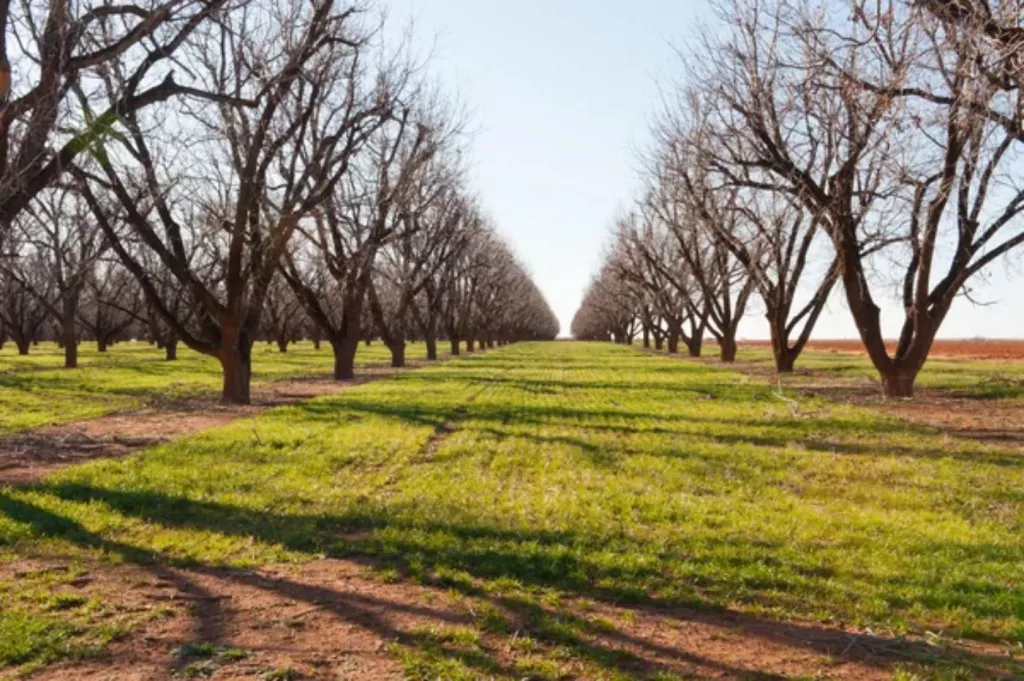
On this page:
The Lifespan of Pecan Trees
Pecan trees are well-known for their impressive longevity, often living for several centuries. These majestic trees are native to North America and are highly valued for their delicious and nutritious nuts.
They typically have a lifespan of anywhere from 75 years up to 250+ years, but there are always exceptions to the rule, as some trees live for over 300 years.

The lifespan of pecan trees can vary depending on several factors, including the species of pecan tree, the growing conditions, and how well you take care of them.
The longevity of pecan trees can be attributed to several factors including the following:
They have a deep taproot system
Pecan trees have a deep taproot system. This characteristic enables the trees to access water and nutrients from deep within the soil.
As a result, pecan trees are better equipped to withstand periods of drought and other environmental stresses. The taproot system provides stability and resilience, allowing the trees to thrive and survive for extended periods.
By reaching deep into the soil, the taproot system allows pecan trees to access water sources that may not be available to other plant species with shallower root systems.
This ability to tap into deep water reservoirs ensures that pecan trees can continue to receive the necessary hydration, even during dry spells or in regions with limited water availability.
Furthermore, the taproot system also enables pecan trees to access essential nutrients that may be present at deeper soil levels. This access to a wider range of nutrients contributes to the overall health and vitality of the trees, supporting their long-term growth and longevity.
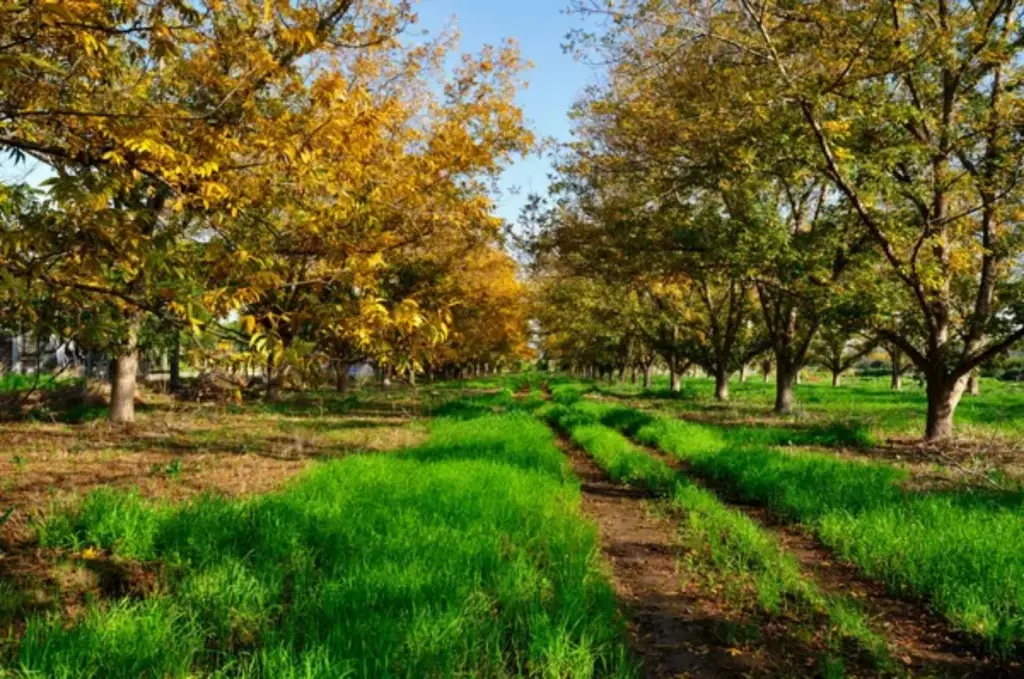
They can adapt to various climate conditions
Pecan trees have demonstrated resilience in a wide range of climatic environments, from hot summers to cold winters. This adaptability allows them to thrive in diverse conditions, ultimately contributing to their long-term survival and growth.
In regions with hot summers, pecan trees are able to withstand high temperatures and prolonged periods of sunlight. Their capacity to cope with these conditions helps ensure their continued growth and development during the summer months, ultimately contributing to their long-term health and longevity.
Similarly, in areas with cold winters, pecan trees have shown resilience to lower temperatures and frost. This adaptability enables them to survive the winter season, maintaining their health and vitality even in challenging environmental conditions.
By withstanding cold temperatures, pecan trees are better equipped to endure the winter months and continue their growth in the following seasons.
Proper care and maintenance contribute to their longevity
Proper care and maintenance, including practices such as pruning, irrigation, and pest management, play a vital role in ensuring the health and longevity of pecan trees.
These essential practices are instrumental in supporting the overall vigor and well-being of the trees, ultimately contributing to their sustained growth and longevity. Pecan trees are vigorous growers, growing at least 24 feet per year.
Pruning is a critical aspect of pecan tree care as it helps to promote proper tree structure, remove dead or diseased branches, and encourage optimal fruit production.
By conducting regular and appropriate pruning, the overall health and longevity of the pecan trees can be enhanced, allowing them to continue thriving for years to come.
Irrigation is another crucial component of pecan tree maintenance, particularly in regions where natural water availability may be limited.
Providing adequate and consistent water through irrigation supports the trees' growth, development, and ability to withstand environmental stresses, ultimately contributing to their long-term health and longevity.

Additionally, effective pest management practices are essential for protecting pecan trees from potential threats that could compromise their health and longevity.
By implementing proper pest management strategies, such as monitoring for pests and diseases and employing appropriate control measures, the overall resilience and vitality of the trees can be preserved, contributing to their sustained longevity.
Selecting suitable planting sites ensures pecan trees have the necessary resources to live long
By choosing appropriate planting locations and implementing effective soil management, the trees can access the necessary resources for sustained growth and long-term vitality.
Pecan trees thrive in well-drained soil with good aeration, and the selection of sites with these characteristics is essential for their long-term health and longevity. Additionally, ensuring adequate sunlight exposure is important for supporting the trees' photosynthetic processes and overall growth.
Furthermore, soil management practices, including proper fertilization and soil amendments, help provide pecan trees with the nutrients they need for long-term growth and productivity.
Adequate soil fertility and balanced nutrient levels contribute to the tree's overall health and resilience, ultimately impacting its longevity.
The Life Cycle of Pecan Trees
| Life Cycle Stage | Approximate Years |
|---|---|
| Germination | 0-1 |
| Seedling Growth | 1-2 |
| Juvenile Phase | 6-10 |
| Reproductive Phase | 10+ |
| Senescence | Several decades |
Pecan trees go through several distinct stages in their life cycle, starting from seed and progressing through germination, seedling growth, maturity, and ultimately senescence.
Growing from seed to sapling
The life cycle of a pecan tree begins with the seed. Pecans are typically propagated from nuts, which are collected from mature trees. The nuts are then planted in well-drained soil, where they undergo a process of germination.
During germination, the seed absorbs water and swells, causing the outer shell to split. A small root, known as the radicle, emerges from the seed, followed by a shoot that will develop into the main stem of the tree.
Entering the growth and maturation stage
As the seedling continues to grow, it enters the seedling growth stage. During this phase, the young tree develops its first set of true leaves and begins to establish a root system.
Pecan trees are known for their deep taproots, which anchor the tree and provide access to water and nutrients deep within the soil. The seedling growth stage is a critical period for the tree's development, as it establishes the foundation for future growth and productivity.
Reaching the juvenile phase
As the tree matures, it enters the juvenile phase, during which it continues to grow and develop but does not yet produce significant quantities of nuts.
Pecan trees typically take 6 to 10 years to reach maturity and start bearing fruit. Once the tree reaches maturity, it enters the reproductive phase, where it produces flowers and ultimately pecans.
A mature pecan tree is typically valued between $2,500 and $2,850.
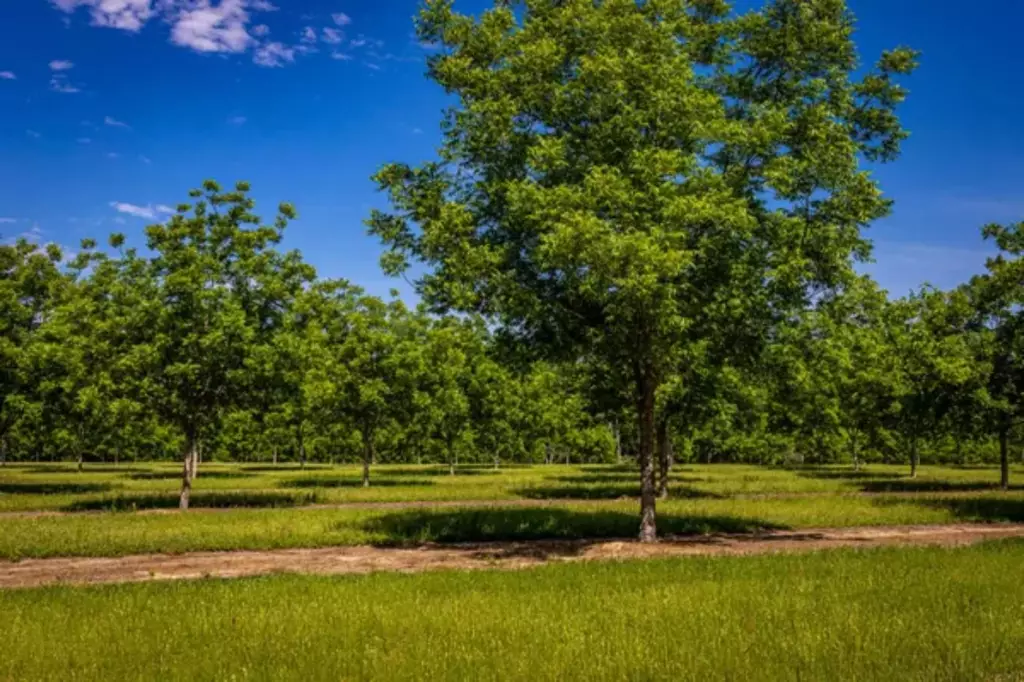
The tree's reproductive phase can last for several decades, during which it bears fruit annually, with the potential for a high yield of pecans.
Going into senescence stage
Finally, as the tree ages, it enters the senescence stage, where its growth slows, and its productivity declines. Eventually, the tree reaches the end of its life cycle and may succumb to disease, environmental stress, or old age.
Throughout the life cycle of a pecan tree, various environmental factors, such as soil quality, water availability, and climate, can influence the tree's growth and productivity.
Proper care and management, including regular pruning, fertilization, and pest control, can help ensure the health and longevity of pecan trees, allowing them to reach their full potential and produce abundant harvests.
Optimal Growing Conditions to Extend the Lifespan of Pecan Trees
To ensure the longevity of your pecan tree, you may need to provide it with optimal growing conditions, such as the following:
Soil quality and pH
Pecan trees grow best in well-drained soil with a pH between 6.0 and 7.0. Sandy loam with clay subsoil is the ideal soil type for pecan trees. If your soil is too acidic, you can add lime to raise the pH.
Conversely, if your soil is too alkaline, you can add sulfur to lower the pH. It is important to test your soil before planting your pecan tree to ensure the soil is suitable for growing pecans.
Climate and hardiness zones
Pecan trees thrive in the southern United States, where the climate is warm and humid. They are hardy in USDA plant hardiness zones 6 through 9.
If you live in a colder climate, you can still grow pecan trees, but you will need to choose a cold-hardy variety. The best time to plant pecan trees is during the dormant season.
Watering and fertilization
Pecan trees require regular watering, especially during the first few years of growth. If your soil is well-draining, you may need to water your tree more frequently.
Fertilizer also improves the health and growth of your pecan tree. Zinc and potassium are essential nutrients for pecan trees, and you can add them to the soil using a fertilizer that contains these elements.
Ammonium nitrate is also a good fertilizer for pecan trees. If you want to know the proper way of fertilizing your pecan trees, this article might be helpful to you.
